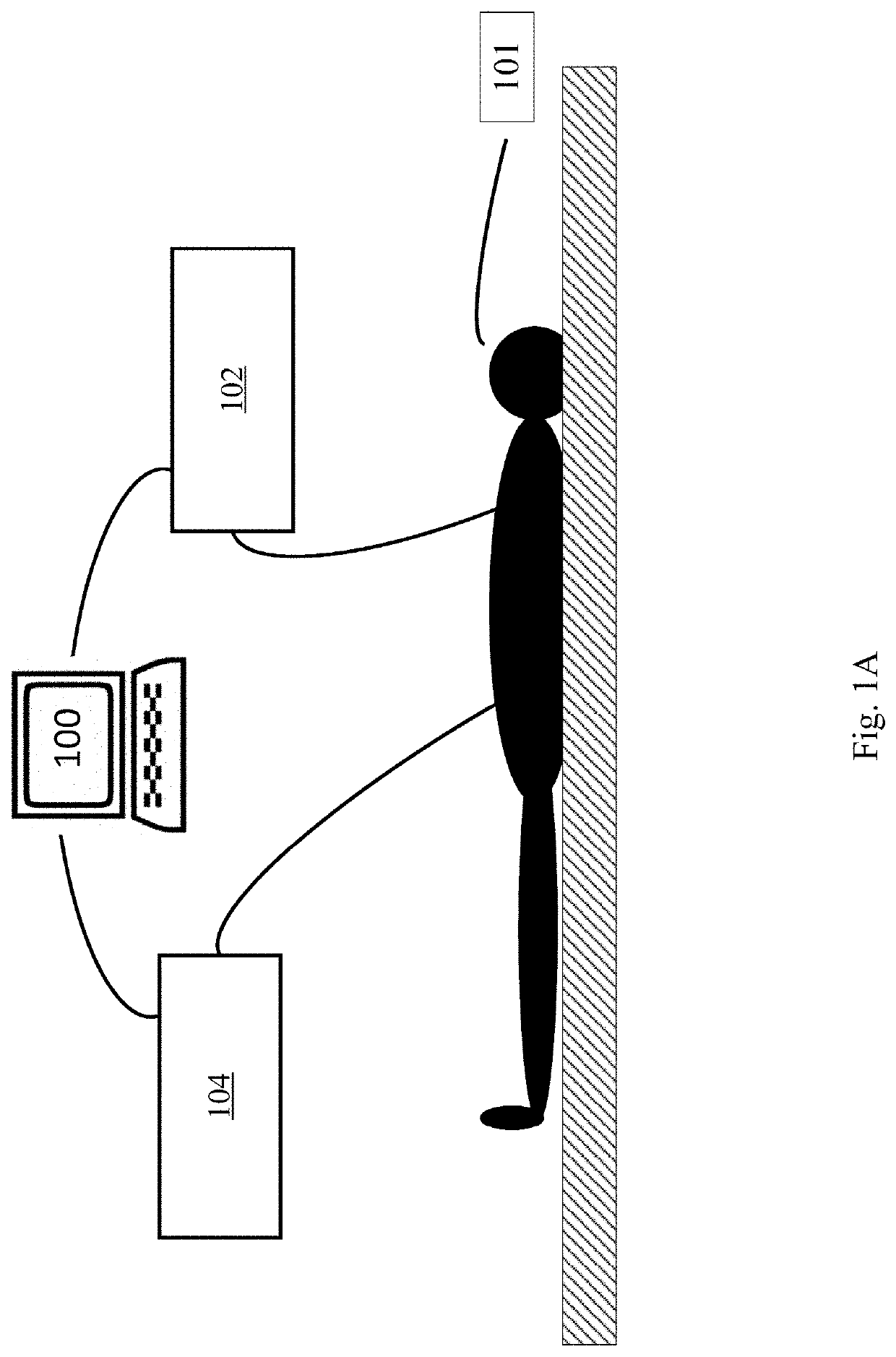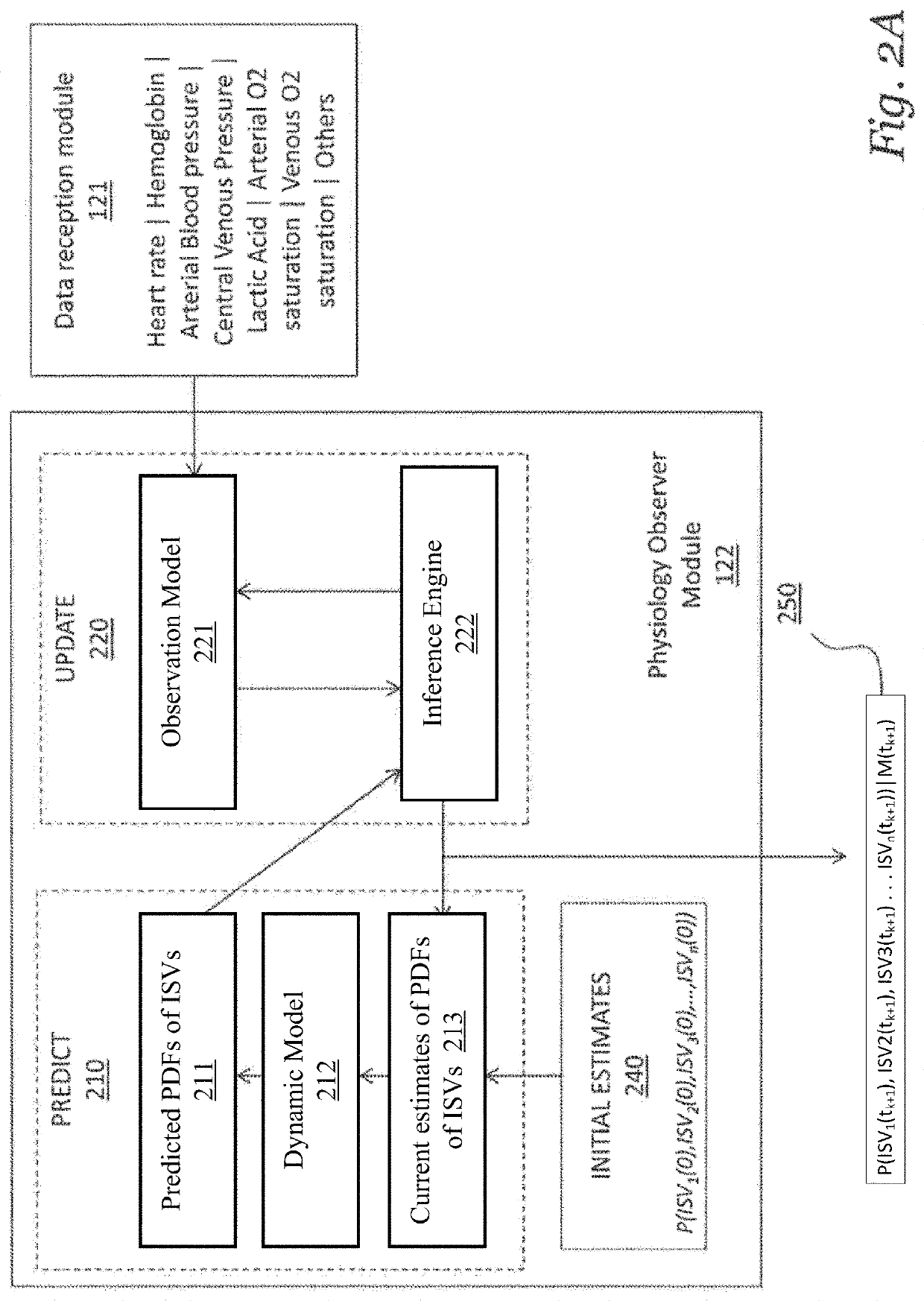System and methods for transitioning patient care from signal based monitoring to risk based monitoring
- Summary
- Abstract
- Description
- Claims
- Application Information
AI Technical Summary
Benefits of technology
Problems solved by technology
Method used
Image
Examples
examples
[0215]FIG. 8D illustrate the evaluation of the state of Inadequate Ventilation of Carbon Dioxide based on the ISV of partial pressure of arterial blood CO2(PaCO2). As a non-limiting example the probability 850 of this state is computed as the cumulative distribution of p(PaCO2) greater than the 50 mmHg threshold. The resulting Clinical Risk can be displayed as an index whose instantaneous time value is given by:
IV CO2 Index=P(PaCO2>50 mmHg|M(tk))=∫50∞P(PaCO2|M(tk))dPaCO2
[0216]FIG. 8E illustrate the evaluation of the state of Hyperlactatemia based on the ISV of whole blood Lactate. As a non-limiting example the probability 850 of this state is computed as the cumulative distribution of whole blood Lactate [p(Lactate)] being above a 2 mmol / L threshold, or in some embodiments, a 4 mmol / L threshold. The resulting Clinical Risk can be displayed as an index whose instantaneous time value is given by:
LAIndex=P(Lactate<4mmolL|M(tk))=∫-∞4P(Lactate|M(tk))dLactate
[0217]FIG. 8F illustrate th...
PUM
 Login to View More
Login to View More Abstract
Description
Claims
Application Information
 Login to View More
Login to View More - R&D
- Intellectual Property
- Life Sciences
- Materials
- Tech Scout
- Unparalleled Data Quality
- Higher Quality Content
- 60% Fewer Hallucinations
Browse by: Latest US Patents, China's latest patents, Technical Efficacy Thesaurus, Application Domain, Technology Topic, Popular Technical Reports.
© 2025 PatSnap. All rights reserved.Legal|Privacy policy|Modern Slavery Act Transparency Statement|Sitemap|About US| Contact US: help@patsnap.com



